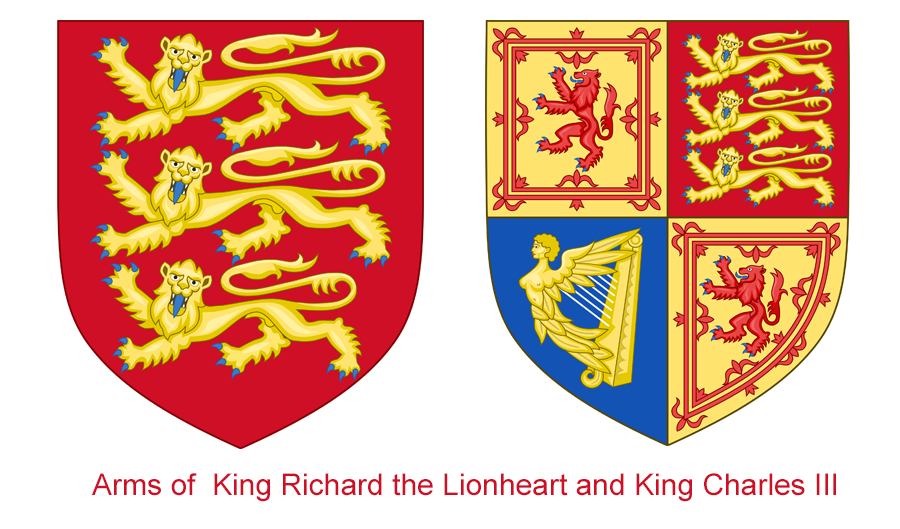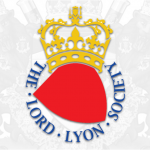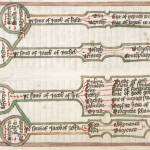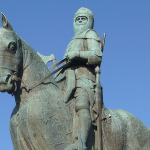Imagine a time when knights clad in armor rode on horseback, proudly displaying their family’s emblem on their shields and banners. This vivid imagery is not just the stuff of legends and fairy tales, but rather an integral part of the fascinating history of heraldry. Heraldry, an ancient practice of creating and displaying coats of arms, has served as a means of identification and a representation of lineage for centuries. While often associated with nobility and the medieval era, heraldry has transcended time and remains relevant in today’s world, as people seek to explore their family roots and connect with their heritage.
In this feature article, we will delve into the captivating history of heraldry, examining its origins, evolution, and the artistry behind the symbols that make up a family crest. We will explore the language of heraldry and the role of heraldic authorities in granting and regulating arms. Furthermore, we will discuss the modern significance of heraldry and provide guidance on how you can discover and authenticate your own family crest. So, prepare to embark on a journey into the past, as we uncover the stories and traditions that have shaped the world of heraldry and the legacy of your family crest.
I. The Origins of Heraldry
The practice of using symbols and designs to represent individuals or groups can be traced back to ancient civilizations such as the Egyptians, Greeks, and Romans. They used distinctive markings on their shields, banners, and clothing to signify rank, affiliation, or achievements. However, the formalized system of heraldry we recognize today emerged in Europe during the Middle Ages, around the 12th century.
During the medieval period, heraldry played a crucial role in the social fabric of European society. Knights, who often wore heavy armor that obscured their faces, needed a way to identify themselves on the battlefield. To distinguish friend from foe, they began to use coats of arms – unique designs painted onto their shields and embroidered onto their surcoats, which gave rise to the term “coat of arms.” Heraldry was not exclusive to knights; it was also used by the nobility to demonstrate lineage, allegiance, and social standing. As a result, heraldic devices became an essential part of ceremonies, tournaments, and everyday life.
The practice of heraldry spread far and wide, as it was adopted by the nobility and ruling classes of various countries. From England and France to Germany and Spain, heraldry became an intrinsic aspect of the ruling elite’s identity. Heraldic emblems were also adopted by civic and religious institutions, such as cities, universities, and churches, to represent their authority and values. The influence of European heraldry extended beyond the continent, as colonies and territories in the Americas, Africa, and Asia adopted heraldic practices in line with their European counterparts. This worldwide adoption of heraldry led to a rich tapestry of designs, with each region and culture adding its own distinct flavor to the practice.
II. The Art and Symbols of Heraldry: A Visual Feast for the Eyes
As we dive deeper into the world of heraldry, it’s time to explore the captivating elements that make up these unique and visually striking designs. Heraldic designs are composed of various components, including colors, patterns, and symbols, which work in unison to create a coat of arms that speaks volumes about the person or institution it represents.
Colors, known as tinctures in heraldry, are the foundation of these designs. With a specific set of colors to choose from, including red, blue, green, black, and purple, as well as metals like gold and silver, heraldry ensures visually distinct designs. Gold is often represented by yellow, while silver is represented by white, adding a touch of opulence to the coats of arms.
Patterns play a significant role in forming the basic structure of a coat of arms. These geometric shapes, known as ordinaries, range from the simple yet powerful cross to the elegant chevron, the diagonal bend, the horizontal fess, and the vertical pale, among others. Each ordinary adds a unique visual aspect to the design, contributing to the overall identity of the bearer.
Now let’s talk about the stars of the show: the symbols or charges that adorn the heraldic designs. Charges can be anything from animals and plants to objects and abstract shapes, each carrying a specific meaning or significance.
Animals have always been a popular choice for heraldic charges, with each species symbolizing particular traits or qualities. For instance, the majestic lion represents courage and strength, while the soaring eagle signifies leadership and foresight. And it’s not just real animals that make an appearance; heraldry is also home to a myriad of mythological creatures. Combining attributes from different animals, creatures like the fearsome griffin and the powerful wyvern become symbols of protection and strength.
Plants and objects also find their place in heraldry, conveying their own unique meanings. The mighty oak tree stands tall, signifying strength and endurance, while the sword, a symbol of authority and military prowess, slices through the air with precision.
As centuries passed, heraldic designs evolved, reflecting the changing artistic styles, tastes, and cultural influences of the times. From the intricate details of the Renaissance and Baroque periods to the distinct national and regional variations, such as the Scottish Celtic motifs and the Moorish-inspired designs of Spanish heraldry, the art of heraldry is a visual feast that continues to captivate and inspire.
III. Decoding the Language of Heraldry: A Journey into a World of Words
Heraldry boasts a rich and unique language of its own, filled with terms that have their roots in Old French and Latin. This specialized vocabulary allows for the precise description of a coat of arms, ensuring that each design can be accurately recreated and understood by those well-versed in the language.
To read and understand a heraldic description, or blazon, it’s essential to know the importance of order and syntax. Blazons follow a specific structure, beginning with the shield’s background colors, then the primary design elements, and finally, the additional symbols or charges. This precise language allows for the faithful recreation of a coat of arms from a written description alone. For instance, a blazon might read: “Gules, a lion rampant Or, armed and langued Azure” – this describes a red shield with a golden lion standing on one hind leg, its claws and tongue colored blue.
Navigating the language of heraldry also involves understanding the role of heralds and heraldic authorities. These individuals and institutions hold the responsibility of granting, regulating, and preserving coats of arms. One such institution is the College of Arms, an official body in England responsible for all matters related to heraldry. Similar heraldic authorities exist in other countries, ensuring that the art and practice of heraldry remain true to tradition and adhere to established rules.
In conclusion, the language of heraldry is a fascinating world of words that not only reflects the rich history of the practice but also ensures the accurate representation and preservation of heraldic designs for generations to come. As you delve deeper into heraldry, this specialized vocabulary will become your key to unlocking the mysteries of your own family crest and understanding the stories it tells.
IV. Heraldry in the Modern World: A Timeless Tradition in a Fast-Paced Age
You might think that heraldry is a relic of the past, but it’s fascinating to see how this ancient practice has adapted and found its place in our modern world. Today, heraldry continues to be relevant, and its influence can be seen in various aspects of contemporary society.
Take a look around, and you’ll notice that corporate and organizational logos often feature elements inspired by heraldry. These designs borrow the visual language of coats of arms to convey a sense of authority, tradition, and prestige. From banks and universities to sports teams and luxury brands, heraldry’s impact on modern design is undeniable.
National symbols and flags are another testament to the enduring relevance of heraldry. Many countries incorporate heraldic elements into their flags or state emblems, drawing on centuries of tradition to convey a sense of identity, unity, and continuity. The use of heraldic symbols in this context reinforces the power of these designs to evoke a deep connection to our shared history.
But perhaps the most captivating aspect of heraldry in the modern world is the resurgence of interest in family crests. As people become increasingly curious about their genealogy and personal heritage, they turn to heraldry as a way of connecting with their ancestors and rediscovering their roots. This renewed interest has led to a boom in genealogical research, as well as the commercialization of heraldry, with businesses offering custom-designed family crests or heraldic products to those eager to explore their family’s past.
In the midst of our fast-paced, technology-driven age, heraldry stands as a timeless tradition that reminds us of the importance of our roots and the stories that have shaped our identities. As you delve into the world of heraldry and uncover the secrets of your family crest, you’ll find a rich and meaningful connection to the past that transcends the boundaries of time.
V. Unearthing Your Family Crest: A Treasure Hunt Through Time
Embarking on the journey to discover your own family crest can be an exciting and rewarding experience, as you delve into the past to uncover the symbols and stories that have shaped your heritage. With a little patience, persistence, and the right resources, you can trace your family’s heraldic history and bring your family crest to life.
To begin your quest, you’ll want to start with genealogical research. Dig into your family tree, speak with relatives, and explore old documents and records to gather clues about your ancestors and their connection to heraldry. Be prepared to spend some time navigating archives, libraries, and online databases to find valuable information about your lineage.
The internet offers a wealth of resources to aid you in your search. Online databases, genealogy websites, and forums can provide valuable leads and help you uncover your family’s heraldic past. Be cautious, however, as not all online sources are accurate or reliable. Always cross-check and verify the information you find to ensure its authenticity.
As you navigate the world of heraldry, it’s essential to keep authenticity in mind. Not all family names have an associated coat of arms, and some heraldic products and services may not be entirely accurate or legitimate. To avoid falling for fraudulent family crests, consult with heraldic authorities or experts who can help you verify the legitimacy of your arms.
Once you have unearthed your family crest, consider preserving and displaying it as a testament to your heritage. From framed prints and embroidered tapestries to engraved jewelry and personalized stationery, your family crest can become a cherished symbol of pride and connection to your ancestors.
So, gear up for an adventure through time, as you embark on the quest to discover your family crest. With determination and the right resources, you’ll uncover a treasure trove of stories, symbols and traditions that have shaped your family’s legacy. As you piece together the puzzle of your heraldic past, you’ll find a deep and meaningful connection to your ancestors, celebrating the rich tapestry of history that has brought you to where you are today. Your family crest, once a distant emblem shrouded in the mists of time, will become a living symbol of your heritage and an enduring reminder of the fascinating history of heraldry.
Conclusion: Embracing Your Heraldic Heritage
As we come to the end of our journey into the world of heraldry, it’s clear that the fascination with coats of arms and family crests remains strong, even in our modern age. The intricate artistry, the symbolism behind each design, and the rich history that defines heraldry captivate us, as we seek to understand our roots and embrace our heritage.
Exploring the history of heraldry and your family crest is not just an academic exercise or a mere hobby; it’s a way of honoring your ancestors, preserving your family’s legacy, and connecting with the stories that have shaped who you are today. As you delve deeper into the fascinating world of heraldry, you’ll discover that every symbol, every pattern, and every color has a story to tell – stories that span centuries and resonate with the human experience.
So, whether you’re a history enthusiast or someone eager to uncover your family’s heraldic past, let the captivating world of heraldry inspire you to embark on a journey through time. Embrace the legacy of your ancestors, and carry the torch of your family’s history into the future, ensuring that the fascinating tradition of heraldry remains alive and well for generations to come.
Image Source:
- Arms-of-King-Richard-and-King-Charles-900x529px: Wikicommons





